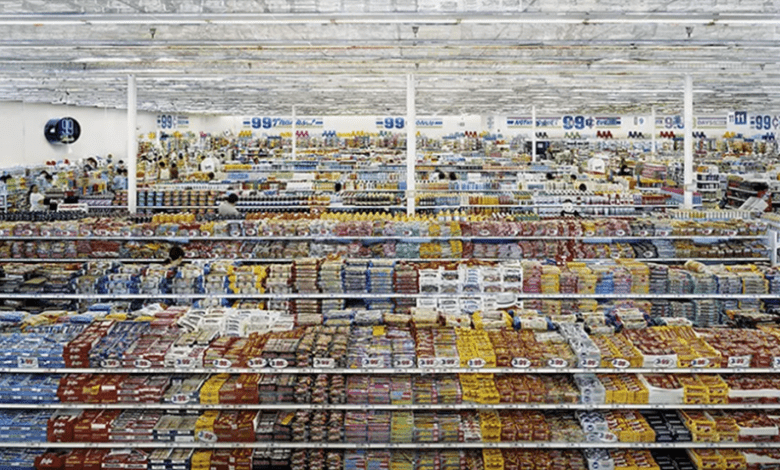Achieving sustainable growth through digital in an unstable time

Register to get 1 free article
Reveal the article below by registering for our email newsletter.
Want unlimited access? View Plans
Already have an account? Sign in
How much do you use your smartphone? I recently tracked my own personal usage and found that I use my phone for about three hours a day, receiving around 250 notifications and unlocking my phone around 100 times in the process.
I’m sure these numbers would be relatable to many people. Digital services and technology are central to our modern lives: constant connectivity has empowered us and granted unparalleled access to information.
Equally the infinite options at our fingertips have highlighted a tension in human psychology; we crave the freedom to choose, but past a certain point we find making choices and decisions mentally paralysing or fatiguing. Our brains then look for ways to avoid having to take on that mental strain (at both a conscious and unconscious level).
In 2017, artist Andreas Gursky brought this tension to life in his exhibition at the Hayward Gallery in London.

This photo illustrates the impossible amount of choice we’re continually exposed to. But even this scale of choice pales in comparison to the internet and its 1.5bn websites.
It’s no surprise then, that the most popular tech is that which helps consumers cut through the scale of choice. Think of the likes of Spotify, Netflix, Tinder and Uber. Each offers users a mix of personal curation, speed and convenience which helps reduce the amount of decision making required from users.
Replicating this approach is a big opportunity for brands and retailers.
However, making this possible from a digital commerce perspective is challenging. There are two elements that are evolving for retailers: consumer experience and retailer infrastructure. Today, in the age of assistance, consumers expect more integrated and intuitive experiences when interacting with brands. People also expect their needs to be understood and accommodated across all their devices. Machine learning technologies are a key ally for optimising the next generation of the digital retail experience, taking disparate information and transforming it into credible, curated results.
So while it’s imperative that the front end of your business is as assistive and simple as possible, the back end will be anything but. There are three key areas retailers need to focus on.
Accelerate
Acceleration means enhancing predictive decision making by making data and machine intelligence the foundation of all activities. Combining existing customer data with Google data and allowing machine learning to make sense of it allows retailers to intelligently manage merchandising, pricing, assortment, store operations and more. This allows retailers to personalise the customer experience and also optimise internal operations.
Connect with customers
Retailers should think about how they can connect with their customers at all stages of their journey. This doesn’t mean just thinking about the online experience – it’s also about how they link digital with the physical retail experience. A good example of this is Google’s work with Matalan. Google worked with the retailer to provide deeper insight into the actual revenue values of in-store purchases driven by its digital ads.
Through leveraging the tool ‘Store Sales Direct’ Matalan was able to add detailed segmentation to its transaction data, including data on products that had appeared to perform poorly online, such as school uniforms and luggage. Matalan found that these online ads were driving in-store sales – giving it a much more accurate idea of its true marketing ROI.
It also allowed the retailer to see whether an in-store purchase came from a new or returning customer or whether someone was a walk-in or click-and-collect customer. This allowed them to take a truly omnichannel approach and use store visit data to approach customers differently based on their proximity to the store. The results found that every £1 spent on Google mobile ads lead to £46 in sales – of which £31 was in-store.
Remove friction
The final step is to remove friction to help consumers drive action by making the experience as hassle free as possible. As voice assistants continue to grow in prominence, retailers need to think about how they market themselves to a handsfree audience. Brands should build third party experiences to allow shoppers to perform actions like adding to baskets through voice.
There is also an opportunity for retailers to reduce friction on mobile, as we see attitudes and expectations towards mobile experiences shift. Around 50% of Brits think sites should load in less than two seconds, but the UK average load time is almost nine seconds.
For retailers, these findings should not be ignored. 75% of people in the UK say that the speed it takes to load a page has the most impact on their overall experience. Perhaps most crucially, 50% of UK users will abandon mobile transactions because of a poor experience. Focusing on creating a smooth and speedy mobile site can drive significant uplift for retailers.
As Gursky illustrated, from garment to groceries the mass array of choice at consumers fingertips is overwhelming. The retailers that utilise the available modern tools and data to help consumers cut through the noise are the ones that will emerge successful in the age of assistance.
By Martijn Bertisen, Director of Retail, Google UK







